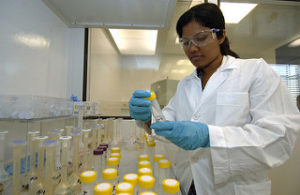
Community engagement sometimes begins as an attempt to accomplish a specific task–mount a festival, put on what is considered to be a performance relevant to community interests (note the construction of that phrase!), or, ahem, satisfy the requirements of a grant. By now, readers of Engaging Matters understand that any attempt to employ community engagement to achieve an organizationally-envisioned end result is, as I have heard described, bass ackwards. It will also not likely yield much in the way of positive results.
More savvy community engagers understand that the relationships come first and that specifics of programming or other manifestations of the relationship will follow. Still, they harbor general thoughts about the possibilities as they begin. This is natural and totally understandable.
Recently, however, on a couple of occasions I have been impressed by the experience of people in the field whose relationship building work yielded results that no one–either in the organizations or in the communities with which they were working–could have imagined in their wildest dreams. These were results far bigger and far more inclusive of multiple communities than the organizers had ever imagined.
Each time I have heard such an example I am reminded of the differentiation between applied research and pure research in the sciences. The former, as I understand it, is an attempt to achieve a specific end, like more efficient solar cells. The latter is simply to figure out how something works or why something happens, with little concern about how the insights might be used.
Community engagement of the applied research variety will likely (and maybe should) be the norm in our work. However, there is a very good, practical case to be made for relationship building for the sake of relationship building. Pure research in the sciences has a notoriously low “success” rate if measured in breakthroughs, even though negative results assist future researchers in pointing them in other directions. With community engagement, relationship building for its own sake will almost inevitably yield a far higher percentage of good results and, the potential for mind-blowing impact on the community is reasonably high.
Since, for the sake of our own sustainability we need as many community connections as we can get, the downside risk of engagement as pure research is relatively low if we have the courage to pursue it.
Prepare to be astonished.
Engage!
Doug
Photo: ![]()
![]() Some rights reserved by IAEA Imagebank
Some rights reserved by IAEA Imagebank
